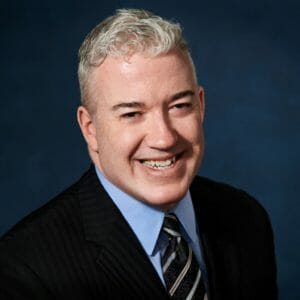

In the movie “Field of Dreams,” Karin Kinsella assures her father, Ray, that “people will come” to his farm’s baseball field as he faces foreclosure.
Those of us who are long-term care advocates have been saying the same thing for years about the demographic demand for long-term care. We have implored policymakers to look ahead, as nursing homes struggle and close, because our aging society will need all the care options available.
As the U.S. Census reported in 2020, the 65-and-older population grew by 34.2% in the prior decade. While policymakers very understandably focus on K-12 education, the under-18 population declined over that same period. Yet consider how very little you ever hear, comparatively, from policymakers about senior care needs.
The medical vulnerability of the nation’s 65-and-older population is revealed by the fact that, by December of last year, one out of 100 had reportedly died from COVID-19.
Today almost 90% of nursing home residents are vaccinated against COVID-19, and vaccination is federally mandated for all staff. The nursing home setting is as safe as one could reasonably expect it to be. And yet recovery in occupancy, compared to pre-pandemic levels, is at a crawl. Even where this is demand, facilities cannot meet it as they struggle to find, and retain, staff amidst an economic recovery that has created so many attractive job alternatives. And facilities are forced to pay ransom to staffing agencies that have expanded their operating margins to fantastical levels.
People will come, we are told, but when?
With the Biden Administration vacillating between indifference and hostility toward nursing home care, states have had to come to the rescue, which only adds to the inequitable landscape that is our nation’s long-term care system.
Yet, because government is as reactive as the society that government represents, some of these measures have only occurred following human calamity.
Look at Nebraska, for example. According to an Omaha World-Herald article, “In 2021, closures of assisted living and nursing home facilities happened in Arapahoe, Valentine, Tecumseh, Ravenna and Omaha.”
Staffing forced these closures, with one closing facility reporting that “traveling nursing agencies sometimes charge $100 to $200 an hour to provide staff.”
On January 12, Governor Pete Ricketts announced $20 daily Medicaid rate increases for nursing homes to “help providers in Nebraska stabilize operations as they face workforce shortages and continuing increased costs due to COVID-19.”
In Maine, three nursing homes announced closures during a single week late last summer.
Almost concurrently, the state declared it would expedite the distribution of “$123 million in funding… to nursing facilities, residential care facilities, and adult family care homes. The funds can be used by long-term care facilities to help address workforce issues by retaining current staff or hiring new vaccinated staff.”
Particularly as I look at independent operations that lack the scale to weather this storm, I worry they will suffer the fate of the Island Nursing Home in Deer Island, Maine – for which the stressors of the COVID-19 pandemic were the final straw in ending four decades of care. As one local paper recounted, “Housing for 60 seniors vanished. The insurmountable problem, amplified by COVID, was finding and retaining staff.”
President Biden has conjured a dark image of the private equity control of around 5% of nursing homes. However, unless his administration wishes to assume the operation of nursing homes, it is hard to imagine what other ownership lifeline will exist to maintain solvency for many independent, family-owned or nonprofit facilities if government resources are insufficient to meet this critical moment, and if facilities are further crushed by unfunded federal expectations.
Brendan Williams is the president and CEO of the New Hampshire Health Care Association.
The opinions expressed in McKnight’s Long-Term Care News guest submissions are the author’s and are not necessarily those of McKnight’s Long-Term Care News or its editors.





